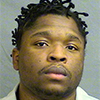[raw shortcodes=1]
Jon Berry grew up in the small town of Greenwood, South Carolina, where schools ignored Brown v. Board of Education in favor of what he calls “separate but equal.” In 1970, the federal government threatened to withhold funding unless they integrated.
Berry doesn’t have good memories of the time. In the sixth grade he was one of six kids in his hometown who were transferred to a white school. He would have preferred to stay where he was and graduate from elementary school with his friends. But one of the other kids being moved was his brother, who was in first grade. Berry’s parents did not want the younger boy starting in the new school alone.

“I left South Carolina with bitter feelings. When I graduated from high school I said I’d never go back there, mainly because when we integrated they took away all the culture from the predominantly black school. We had to assimilate into whatever was going on. Then at first black people were outnumbered two to one. Everything was done democratically so you got out-voted on everything.
“One of the things that they did at the black school, they celebrated a lot of things. Like when I was in sixth grade that principal had sixth-grade graduation with caps and gowns and all my friends graduated and marched and the whole community came to see them. It was standing room only.
“When I started off in elementary school all my teachers were black. When I went to the integrated school none of my teachers were black. When I got to high school I don’t know what happened to those black teachers.”
Education was important to the family. Berry’s father went to school in a one-room schoolhouse and then to college on the GI Bill. He spent two decades teaching math before becoming an assistant principal. Berry followed in his father’s footsteps, attending South Carolina State University on a U.S. Army scholarship and training to teach math.
When Berry graduated, he went into the service. While he was in charge of Army recruiters in the Twin Cities in the late 1980s, he married a woman who taught in Minneapolis. When he left the Army they moved back to Minnesota. The school in the juvenile detention center, Stadium View, was his second teaching position.

“There were tons of broken pieces that complicated the matter of education for me.”
An educator who was nearly lost to the streets, Sammy White was Mr. Berry’s student at Franklin.
“I started working at Franklin Middle School and I kind of liked it because I was helping and working with people that looked like me that I felt needed to help, but they closed that school in 2005 and I came here. To my surprise, I knew a lot of the kids here. They were saying, ‘What are you doing here, Mr. Berry?’ What am I doing here? What you doing here?
“I said after listening to your stories I feel guilty. I wasn’t born with a silver spoon in my mouth but I was born with a flatware spoon. They could relate to how it feels to be shot. They were having a conversation — ‘I got shot two times, three times’ — like it was a normal thing. I can’t imagine.
“You wanted to say, ‘These people died so you can go to school and you need to go and do your best.’ They were raised in a different time with different values, which is hard to overcome.”

The day after Don Austin was arrested, Berry showed him how to find square roots. He broke things down as far as possible, teaching Austin to simplify and then add and subtract. Once he had shown Austin something, he had the boy teach another student to reinforce the lesson.
“For some reason he liked me. When a student likes you they try to please you. In my class I’m tough and no nonsense and a disciplinarian. But ones they get to know me then they find out I’ve got a lot of humor and I work with them. He was one of the guys that started liking me. That’s how we kind of bonded. I had a group of guys that would come after school and they would do math, and they liked doing math.”

“I remember yelling at him. Like I’m tired of just being this hard-headed dick.”
One day Don Austin decided to try doing things Mr. Berry’s way.
District administrators kept saying Austin’s test scores placed him in elementary grades and that he could not do the kind of work Berry was asking of him. So Berry put together a portfolio of the boy’s work and pressed it on him. Next time he started a new school the completed worksheets would prove Austin could rise to a challenge.
There wasn’t going to be a next time, though. In June 2012, less than a month after Austin was released from prison, he was back in custody, this time accused of participating in an armed robbery. He is scheduled to be released in late 2017.
Stadium View staff are supposed to avoid forming personal attachments to detention center residents and can’t have relationships with them on the outside. So Berry kept it casual when he ran into Austin during the month he was free.
“I was at a place eating some food and he came in there with his mother. I said, ‘When’d you get out?’ He said, ‘Just last Thursday.’ I said, ‘Oh, you wanted to be a barber, right?’ He said, ‘Yeah.’ I said, ‘Well, you know you’ve got that money waiting for you to go to school. Did you take any barbering in prison? You ought to be able to fit right in.’ Next thing I know he was back down there.
“You know, while in here I can reward them and get them hyped about positive things, but when they leave they go back to where they came from and they have to go back to the same environment and end up being with the same people doing the same things. No matter what kind of program we have here, if we don’t have something to hand them off to that’s similar.”
// mpStick will use sensible defaults $(‘.pushed-out-stick-top’).mpStick();
}(jQuery));[/raw]










